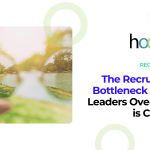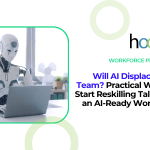Not all leaders fail because they lack skill. They struggle because the conditions around them create drag.
Drag is the friction that slows progress. It’s the meetings that add more noise than clarity, the constant firefighting that leaves no space for strategy, and the teams that wait instead of move because decisions stall at the top.
Every organization has it. But when drag builds up at the leadership level, it quietly bleeds energy, time, and profit from the business.
The Hidden Cost of Leadership Drag
According to Deloitte’s 2025 Human Capital Trends report, 41% of leaders’ time is spent on work that doesn’t create value.
That’s not a motivation problem. It’s a focus problem. Leaders want to lead, but most are buried in administrative work, reactive decisions, and interruptions that keep them from higher-value priorities.
McKinsey found that managers spend 37% of their time making decisions, yet 61% of that time is used ineffectively. This equates to 530,000 lost workdays and $250 million in wasted labor costs every year for a typical large organization.
And it’s not just lost time. Leadership burnout compounds the issue. Deloitte’s recent research, highlighted by Forbes, revealed that 71% of executives report feeling burned out, and nearly 70% are considering leaving for roles that better support their well-being. With a solution, you’re now looking at a second issue of higher attrition.
Leadership drag isn’t about weak leaders. It’s about a system that keeps strong ones from performing at full capacity. When that happens, decision quality, innovation, and execution all slow down.
Why Great Leaders Lose Momentum
Even high-performing leaders hit a wall when growth outpaces clarity or when responsibilities scale faster than decision systems.
Leadership drag builds quietly. It starts with good intentions like staying involved, supporting teams, or double-checking details. However, over time, those habits create dependency instead of empowerment. Leaders become the bottleneck without realizing it.
You see it in small but costly ways:
-
Projects that stall in approval loops
-
Leaders too busy reacting to develop their teams
-
Meetings that end without clear solutions or next steps
-
Talented teams that now unclear about their priorities, too
That’s leadership drag in real life. And the longer it goes unaddressed, the more it compounds across the organization.
What High-Performing Organizations Do Differently
Top-performing companies don’t have more hours in the day. They have less friction in the system. They help leaders focus their attention where it matters most.
Research from McKinsey and DDI shows that organizations that invest in leadership capability are up to 3× more resilient and 2.8× more likely to outperform peers financially.
Yet most organizations still struggle to turn that investment into results. Harvard’s 2025 study found that while more than 7 in 10 organizations see expanding leadership capacity as essential to achieving business goals, only 63% say their leaders are highly effective.
Knowing leadership matters isn’t the same as building it well. Knowledge isn’t the same as application.
These high-performing companies:
-
Define what leadership time should (and shouldn’t) be spent on.
-
Develop managers to make faster, better decisions.
-
Build systems that encourage clarity and accountability.
-
Align leadership development with measurable business outcomes.
That’s how they keep momentum high and prevent drag from creeping in.
How to Spot Leadership Drag in Your Organization
Before you can fix drag, you have to see it clearly. Start here:
-
Time Use vs. Value: Have senior leaders track their time for two weeks, then bucket it into three zones: strategic, operational, and administrative. What percentage goes to strategy versus admin, meetings, or approvals? If less than half of their time lands in the strategic zone, your organization is running below capacity.
-
Decision Speed: Track how long it takes for key decisions to move from proposal to action. Each extra hand-off adds friction. The best-performing companies measure “decision velocity” — not how many decisions leaders make, but how quickly they make and communicate them.
- Meeting-to-Action Ratio: Review how many meetings end with a concrete next step or decision. When discussions repeatedly end in “let’s regroup,” it’s usually because decisions lack ownership or clarity.
-
Information Flow: Watch how quickly direction or feedback moves between leaders and teams. When communication slows, so does execution. Look for lag time between conversations and action. Does it take multiple follow-ups by either leaders or teams to get tasks done?
-
Energy vs. Impact: Ask leaders what parts of their week drain energy but don’t clearly drive outcomes. Patterns will point straight to structural friction like outdated processes, unclear ownership, or too many approval layers.
- Leadership Load Balance: Look at how many people, projects, and cross-functional dependencies sit under each leader. A lopsided structure forces top performers into constant firefighting, eroding both clarity and bandwidth.
Once you’ve mapped these friction points, share the results openly with your leadership team.
You don’t have to fix everything at once. Even removing one or two bottlenecks can free up hours of leadership capacity each week and restore momentum across teams.
How Hoops Helps Leaders Regain Focus and Lift
At Hoops, we help organizations remove leadership drag by helping executives and managers refocus their energy on the work that drives results.
Our Executive Coaching and Leadership Development programs are designed to:
-
Create space for leaders to step back from reactivity and clarify priorities
-
Strengthen decision-making, delegation, and communication
-
Develop next-level leaders who can take ownership instead of waiting for direction
-
Measure progress through real business outcomes
What makes our approach different is simple: we learn where your gaps are and how they’re holding back your goals. Each engagement blends data with real conversation — what’s working, what’s draining energy, and where focus creates the biggest lift.
It’s not about changing who leaders are. It’s about helping them operate at their best.
Each partnership is structured, confidential, and centered on practical behavior shifts that improve execution, retention, and performance. We use validated tools like Hogan and 360-degree feedback to help leaders see their impact clearly, then build the habits that keep teams aligned and moving forward.
Our goal isn’t to add more to a leader’s plate. It’s to help them clear the noise and create lift instead of drag.
Three Questions to Ask Yourself
If your organization feels like it’s working hard but not moving fast, pause and ask:
-
Are your top leaders spending their time where it truly drives value?
-
Do decisions flow quickly, or do they bottleneck at the same points?
-
Are emerging leaders being developed to take on more — or just taking on more work?
If any of these hit close to home, your business might not need more people or new tools. It might just need less drag.
The Bottom Line
Leadership drag is quiet but costly. It slows decisions, drains energy, and keeps capable people from doing their best work.
The solution starts with clarity. When leaders have time to think strategically, make faster decisions, and empower others to act, momentum returns. Meetings get shorter. Direction gets clearer. Progress feels possible again.
That is what we help leaders do at Hoops: remove friction, refocus attention, and rebuild lift at every level of the organization.
When leadership is focused, everything else follows—execution, culture, and results.
👉 Let’s talk about how we can help your organization clear the drag and create lift through tailored leadership development and executive coaching.
Build Your Winning Team. Hire and Scale Talent.







